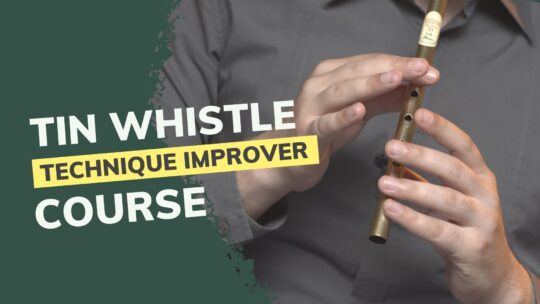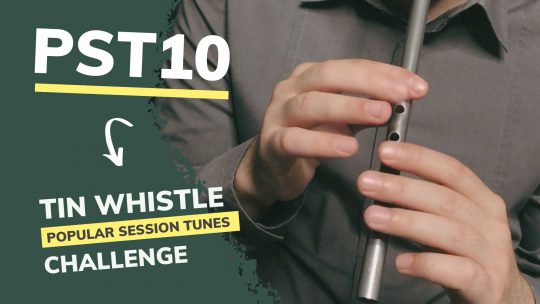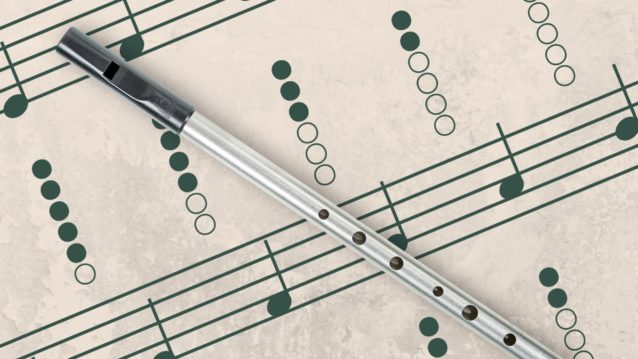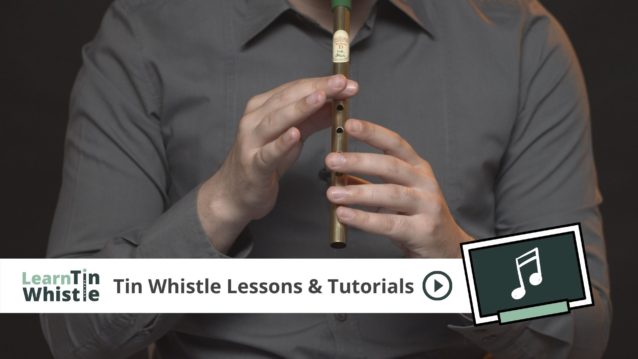This lesson is about triplets, an ornament that slightly differs in its type from the previous note decorations we learned on a tin whistle (penny whistle). Unlike cuts, taps, and rolls, a triplet doesn’t rely upon a specific fingering technique. It is a rhythmic embellishment instead. And before we continue, note there is a common synonym for a triplet, as some players tend to call it “treble”.
How to do triplets on a tin whistle?
As the name suggests, triplets are ornaments consisting of 3 notes. They are made by playing a note right between two evenly rhythmically spaced notes. To give you just an example, imagine the melody line has an interval from G to B. On a tin whistle, there is a note A between, and you play it. So, instead of just G-B, you get G-A-B while staying in the same tempo and beat, as you would play without the middle note. To conclude, playing 3 notes where naturally there is a place for 2, that’s the triplet!

The same method applies if a melody line goes in descending order, from B to G. And these are just examples, it really depends on the tune. It can be E to G jump, D to F#, and so on. You name it.
Where to use triplets?
In terms of Irish traditional music, triplets are especially interesting in faster tunes, such as jigs, reels, or polkas, where a lot of notes are eighth notes, evenly spaced. So, whenever you spot a two-note jump, it can be a place to put a note in between and create a triplet. However, most of the time, the vast majority of players use triplets only a couple of times in a tune.
In the example below, you can see how we added triplets in The Banshee (reel) and The Rolling Wave (jig).
Here are the sheet music and tabs for the previous video examples. The spots where we play triplets are marked with the word “TRPL”.


You certainly don’t want to bloat a tune with too many triplets, as it may break the pulse and the whole feel of the tune instead of enhancing it. Repetition is already the foundation of Irish traditional music, and what many players commonly do is play a triplet every other time in the repeating part of a tune. That way, triplets are used in favor of variations, and that’s something we would recommend as well.
Practicing triplets on a tin whistle
As always, a metronome really helps with exercising triplets too. And we would suggest starting with a faster tempo. Then, play two-note jumps a couple of times and follow the pulse until you get in the rhythm. Start with D-F# jumps and then try to put an E between, alternately. You can then move to other combinations, such as E-G, F#-A, and so on. Then change direction and play descending jumps, like F#-D, G-E, A-F#…
Triplets especially sound good in fast tempos, in such a case the middle note sounds more like a grace note and that’s what we want to hear. So, once you get used to the ornament itself, try increasing the tempo to get the best feel of using it.
Another good example of tin whistle triplets
Listen carefully to Mary Bergin‘s playing below. There are quite a few triplets right from the beginning, and they sound just lovely!




